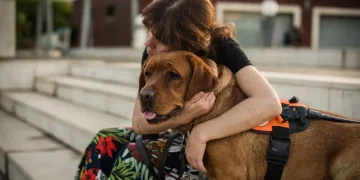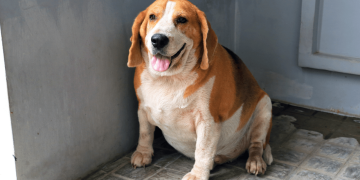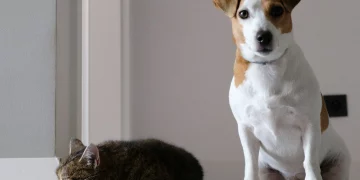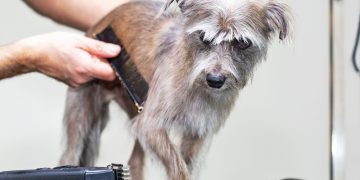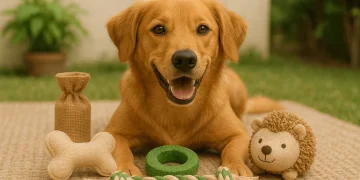Pets are fascinating companions, offering unconditional love and loyalty, but their communication methods are far different from our own. While humans primarily communicate through speech, pets convey their thoughts, emotions, and needs through body language. Understanding the subtle signs and gestures that your pet displays can deepen your connection with them, make you more attuned to their needs, and help prevent behavioral problems. Whether you have a dog, cat, or other pet, learning to decode their body language will foster better communication and a stronger bond.
In this guide, we will explore how different pets communicate through body language and teach you how to interpret their signals for a better understanding of their emotional state. By observing your pet’s posture, facial expressions, tail movements, and other behaviors, you can gain valuable insights into what they are feeling and thinking.
Why Understanding Pet Body Language Matters
Understanding pet body language is essential for building a strong relationship with your pet. Here are a few reasons why it’s crucial:
- Preventing Misunderstandings: Pets can’t use words to tell us what they need, so they rely on non-verbal cues to communicate. Misinterpreting these cues can lead to confusion or behavioral issues, which may harm your relationship.
- Ensuring Safety: Recognizing signs of stress, anxiety, or aggression in your pet can help prevent accidents or dangerous situations. By noticing these signs early, you can take appropriate action.
- Promoting Positive Behavior: When you respond to your pet’s body language in a way that addresses their needs or feelings, you reinforce positive behavior and create a calm, happy environment for both of you.
- Enhancing Bonding: Pets that feel understood are more likely to form a deeper connection with their owners. By paying attention to their body language, you show your pet that you are in tune with their emotions.
Decoding Dog Body Language
Dogs are incredibly expressive creatures, and their body language can reveal a lot about how they’re feeling. While every dog is different, certain signs are fairly universal when it comes to understanding what your dog is trying to communicate.
1. Tail Position and Movement
A dog’s tail is one of the most telling parts of their body when it comes to communication. The position and movement of the tail can give you important clues about their mood.
- Wagging Tail: A wagging tail is often a sign of happiness or excitement, but the context and speed matter. A slow wag can indicate a calm, content dog, while a fast, wide wag may signal excitement.
- Tail Between Legs: If your dog’s tail is tucked between their legs, it usually indicates fear or anxiety. This could happen if they’re feeling threatened, nervous, or submissive.
- Straight Tail: A stiff, straight tail held out horizontally could suggest that the dog is alert, focused, or in a defensive stance. This is common when a dog is investigating something or preparing for action.
2. Ear Position
Dogs use their ears to communicate as well. The position of their ears can provide information about their emotional state.
- Relaxed Ears: When a dog’s ears are relaxed and in a neutral position, they’re generally calm and comfortable.
- Ears Forward: Ears that are perked up and pointing forward usually indicate interest, curiosity, or alertness. Your dog may be focused on something in their environment.
- Ears Back: Flattened ears indicate fear, anxiety, or submission. If a dog pulls their ears back while exposing their belly, it often means they are in a vulnerable or submissive position.
3. Body Posture
The way a dog holds their body can indicate their emotional state or intent.
- Relaxed Body: A calm, relaxed dog will have a soft, loose body posture. They may be lying down or standing with no tension in their muscles.
- Tense Body: A dog who is anxious, fearful, or aggressive may have a stiff, rigid posture. If the body is rigid, along with other signs like a wagging tail or bared teeth, this could signal a potential threat.
- Play Bow: When a dog lowers their front legs while keeping their rear end raised, it’s a clear sign of playfulness and a friendly gesture. This is often a precursor to a fun and lighthearted interaction.
4. Facial Expressions
A dog’s face can also convey a great deal of emotion.
- Soft Eyes: Relaxed, soft eyes are a sign of a calm and content dog. This is often accompanied by a relaxed mouth.
- Wide Eyes: If a dog’s eyes are wide open with the whites showing, they may be feeling threatened, anxious, or stressed.
- Baring Teeth: While bared teeth are often a sign of aggression, it’s important to consider the context. Dogs may also show their teeth during play, but in that case, their body language will be relaxed rather than tense.
5. Vocalizations
Dogs also use vocalizations to communicate their feelings.
- Barking: Barking can mean many things, including excitement, alerting to danger, or simply trying to get your attention.
- Whining: A whining dog is usually anxious, frightened, or seeking attention. If the whining is persistent, it may signal a need for comfort or reassurance.
- Growling: Growling can indicate that a dog feels threatened, is in pain, or is warning someone to stay away. However, some dogs growl during play, so it’s important to consider the full context.

Decoding Cat Body Language
Cats are more independent than dogs, but they are also highly expressive. They communicate their needs and emotions through subtle body language. Here’s how to decode your cat’s behavior.
1. Tail Position
Much like dogs, a cat’s tail can reveal a lot about their mood.
- Upright Tail: A tail held high is a sign of confidence and happiness. Cats may greet their owners with their tail held high as a sign of affection.
- Tail Flicking or Lashing: A flicking or lashing tail often indicates irritation or agitation. Your cat may be annoyed, frustrated, or overstimulated.
- Tucked Tail: A tail tucked between the legs signals fear, anxiety, or submission. This is commonly seen in cats who are frightened or defensive.
2. Ear Position
A cat’s ears are very mobile and can indicate their emotional state.
- Forward-Facing Ears: When a cat’s ears are pointed forward, they are alert, curious, and engaged. This often happens when they are focused on something in their environment.
- Flattened Ears: Flattened or sideways ears usually indicate that a cat feels threatened, anxious, or angry. A cat may flatten their ears to protect themselves when they feel cornered or defensive.
3. Body Posture
A cat’s body posture tells you a lot about how they feel and whether they are relaxed or threatened.
- Relaxed Body: A calm, relaxed cat will have a soft body posture and may be resting or sitting comfortably.
- Arched Back: A cat will arch their back when they’re feeling threatened or scared. This is a defense mechanism meant to make the cat appear larger.
- Crouching: A crouching cat, with their legs bent and body low to the ground, may be preparing to pounce or feel threatened.
4. Purring and Meowing
Cats use vocalizations, including purring and meowing, to communicate.
- Purring: A cat’s purring typically indicates contentment and relaxation. However, some cats also purr when they are anxious or in pain, so always consider the overall context.
- Meowing: Meowing is a common way for cats to get attention or communicate with their owners. The pitch and frequency of the meow can vary depending on what your cat wants.
5. Kneading
When a cat kneads with their paws, it’s often a sign of contentment and affection. This behavior is common in kittens when nursing from their mother, and adult cats retain this behavior as a sign of comfort and security.
Decoding Other Pets’ Body Language
Other pets, such as rabbits, ferrets, guinea pigs, and birds, also communicate through body language, though their signals may differ from those of dogs and cats. Here are some common body language cues for these pets:
1. Rabbits
- Thumping: A rabbit may thump their back feet when they’re scared or agitated.
- Licking: Licking can be a sign of affection or grooming behavior.
- Chinning: Rabbits may rub their chin on objects to mark their territory, a sign of confidence and ownership.
2. Ferrets
- Dooking: A ferret’s distinctive “dooking” sound often indicates excitement or playfulness.
- Weaseling: Ferrets may wiggle or “weasel” their bodies in excitement or to indicate that they’re ready to play.
3. Guinea Pigs
- Popcorning: When a guinea pig jumps in the air, it’s a sign of happiness and excitement, similar to a dog’s joyful zoomies.
- Teeth Chattering: Guinea pigs chatter their teeth to signal annoyance, fear, or aggression.
4. Birds
- Tail Flicking: A bird that flicks its tail is often feeling irritated or agitated.
- Head Bobbing: Birds may bob their heads to indicate excitement, playfulness, or to attract attention.
Conclusion
Understanding your pet’s body language is crucial for fostering a strong bond and improving communication. Whether you have a dog, cat, rabbit, guinea pig, or bird, learning to interpret their body language helps you meet their needs and prevent potential issues. By paying attention to their cues, you’ll be able to better understand their emotions, anticipate their needs, and build a deeper, more trusting relationship.




